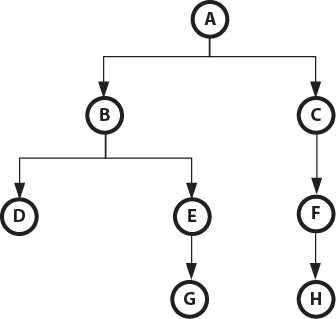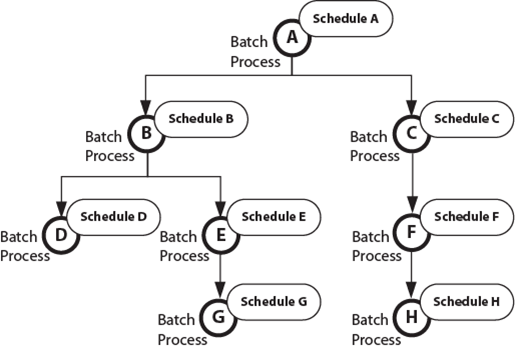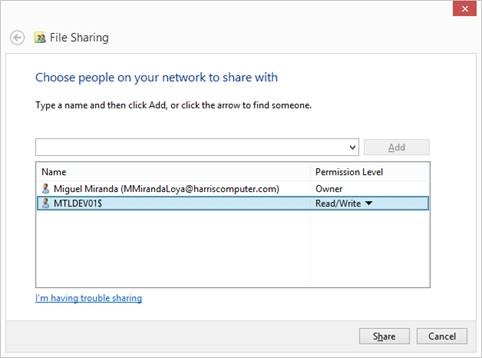Mass Appraisal Generate Pending Audit Batch Process
Overview
The Mass Appraisal Audit Pending batch process automatically generates new MA Audit Information records in Govern OpenForms. While these records can be created manually, running the batch process can save time and increase the accuracy of the records
Records can be created for a:
- Saved dataset
- Jurisdiction and neighborhood
- Range of tax map numbers
The MA Audit Pending batch process updates the following fields on the MA Audit Information form. Once the batch process is complete:
- The Status field is set to Pending.
- The Frozen ID is set to 0.
The following fields are updated as selected on the batch process form.
- Audit Reason Code: This is a required field.
- Appraiser
- Entry Date: This is a required field.
- Entry Code
- Activity Code: This is a required field.
- Source Code
You can select parcels from the batch process by jurisdiction or neighborhood within a range of tax map numbers, or in a saved dataset. Alternatively, you can crate audit records for all parcels. The fiscal year is required.
The Mass Appraisal Audit Pending batch process generates Audit Information user records in Govern OpenForms. The Status field is set to Pending once the process is run. These records can be modified or deleted, as any other record.
Documentation
To read this information in pdf format, click on the following link:
Prerequisites
The following tables are required for the Mass Appraisal Audit Pending batch process:
- MA_APPRAISERS: This table lists the appraisers that can be selected for the audit.
- NA_NAMES: This table lists all the name and address accounts in the deployment.
- VT_USER.MAENTRY: This table lists the entry code that can be associated with an audit.
- VT_USER.MAINFSRC: This table lists the source codes associated with the Mass Appraisal audit.
- VT_USER.MAACTV: This table lists the activity codes associated with the audit.
- VT_USER.MA_AUDIT_REASON: This table lists the reasons for conducting the audit.
If you are running the process on a saved dataset, one must be created.
Related Forms
The Mass Appraisal Audit Information form is updated by the Mass Appraisal Audit Pending batch process. The Mass Appraisal Audit Finalized batch process can be run to create finalized MA Audit Information records from pending ones.
MA Audit Information User Form
The following new fields are now included in the MA Audit Information form. These are required for the MA Audit Pending and MA Audit Finalized batch processes.
- Status: The Status field is automatically set to Pending when you run the MA Audit Pending batch process. In this state the form can be modified or even deleted. An appraiser can update the status field to Finalized. The MA Audit Finalized batch process selects the Finalized flag. At this point, the record can no longer be modified.
- Audit Reason Code: The Audit Reason Code contains user defined values from the VT_USER.MA_AUDIT_REASON table. When you run the MA Audit Pending batch process, you must select a reason code. This can be modified after the process is complete.
For details, see Mass Appraisal Audit Information.
Related Batch Processes
The MA Audit Finalized Batch Process is similar to the MA Audit Pending batch process. It generates finalized Mass Appraisal Audit Information records for existing MA Audit Information records with the Status set to Finalized. The MA Audit Finalized batch process selects the Finalized option and updates the Entry Code as set on the batch process. The finalized Audit Information records cannot be deleted, except by a user with authorized permissions.
For details, see Mass Appraisal Audit Finalized.
Business Rules for the MA Audit Pending Batch Process
The MA Audit Pending batch process creates new MA Audit Information records for all Mass Appraisal records that:
- Match the Selection Criteria
- Do not have a current MA Audit Information recording with Frozen ID 0
- Are in the Fiscal Year selected
Creating Mass Appraisal Audits
You can use the Mass Appraisal Pending and Mass Appraisal Finalized batch processes, as follows, in order to facilitate the Mass Appraisal audit procedure. None of these steps are required.
| Step 1 |
| Receive the requirement to create a number of Mass Appraisal Audit Information records on parcels within any of the following: |
|
|
|
| Step 2 |
| Run the Mass Appraisal Audit Pending batch process in order to create Mass Appraisal Audit Information records.: |
| Result |
| The MA Audit Pending batch process updates the following fields on the MA Audit Information form: |
| Status: Sets the Status field to Pending. |
| Frozen ID: Sets the Frozen ID to 0. This indicates that the record is current and modifications can be made. |
| It updates the following fields on the user form as selected on the batch process form. |
|
|
|
|
|
|
| The record can be modified or deleted at this point. |
| Step 3 |
| Perform audits on the parcels, update the Audit Information records, and set the Status field to Finalized. |
| Step 4 |
| Run the MA Audit Finalized batch process in order to create a number of Mass Appraisal Audit Information records for parcels within any of the following: |
| Result |
| The MA Audit Finalized batch process updates the following fields on the MA Audit Information form: |
|
|
|
| Updates the following field as selected on the batch process form. |
| Entry Code |
| The record is frozen and cannot be modified, unless the user is granted the required access permissions. Typically, only supervisors have access to modify frozen records. |
Defining the MA Audit Pending Batch Process
There are no special requirements for the MA Audit Pending batch process. It is set up as any other batch process in Govern OpenForms. You can create as many MA Audit Pending batch processes as required.
To configure the batch process:
- Launch GNA.
- Select Editors > Batch Process Definition Editor.
- Select 101-ma-bp-007 – MA – Audit Pending.
- Enter a Code, Short, and Long Description in order to uniquely identify the batch process.
- Select the Transaction tab.
The Transaction Type and Transaction Mode can be set to any value, depending on how you want to run the batch process. Refer to the Govern Batch Scheduler guide for details. - Complete the other parameters as required by your organization.
- Click Save.
Adding the MA Audit Pending Batch Process to a Profile
In order to use the batch process in Govern OpenForms, you must add it to at least one Profile. You can add it to multiple Profiles.
To add the batch process to a Profile:
- Launch GNA.
- Select Editors > Profile Editor.
- Select the Profile that you want to use.
- Select the Links tab.
- Click Add in the Batch Process section to add open a secondary window.
- Select the batch process.
- Click Save.
Running the MA Audit Pending Batch Process
To run the batch process:
Open the Batch Program:
- Launch Govern.
- Open a Profile that contains the MA Audit Pending batch process.
- Open the Batch Processing Explorer.
- Select the Mass Appraisal Audit Pending batch process.
Complete the Parameters:
- Complete the Selection Criteria as follows.In the Parcels to Compute, do one of the following:
Select All to create Pending Audit records for all parcels with Aduit records that do not have a do not have a status..
Select Saved Dataset and select a saved dataset from the drop-down list. - Select Jurisdiction and select a jurisdiction and neighborhood from the drop-down list.
- Select Tax Map Number and enter a range of tax map numbers.
- Enter the year you are associating with the Audit records in the Year parameter.
- Click on the calendar icon and select the date of the audit.
- Select the Appraiser who is responsible for the audit from the Appraiser drop-down list.
- Select the entry code from the drop-down list (Table: VT_USR. MAENTRY).
- Select the source code from the drop-down list (Table: VT_USR. MAINFSRC).
- Select the activity code from the drop-down list (Table: VT_USER. MAACTV).
- Select the reason for the audit from the Audit Reason drop-down list (Table: VT_USR.MA_AUDIT_REASON).
Run the Program
- Do one of the following:
Click Run to run the batch process immediately.
Click Schedule to run the batch process at a later time.
Viewing the MA Audit Log Files
The following information is logged and appears on the Processing tab of the MA Audit Information batch process in Govern. If you are scheduling the process to run at a later time, the information can be viewed on the Log Files in the Govern Schedule
| Parameter: ReasonCode = The Reason Code selected for the batch Process. | |||
| Parameter: BatchProcessType = The name of the batch process. | |||
| Parameter: Appraiser = The name of the appraiser who is responsible for the audit. | |||
| Parameter: EntryDate = The date of the audit. | |||
| Parameter: EntryCode = The entry code selected for the Audit. | |||
| Parameter: Activity = The activity code selected for the audit. | |||
| Parameter: SourceCode = The source code selected for the audit. | |||
| Parameter: ValueFinalized = Displays True or False according to whether the Value Finalized option is selected or deslected. | |||
| Parameter: YearId = The year the audit occurred. | |||
| Parameter: IsAllParcels = Displays True or False according to whether All is selected. | |||
| Parameter: CanChooseJurisdictionNeighborhood = Displays True or False according to whether the Jurisdiction option is selected. | |||
| Parameter: Jurisdiction = Displays the code for the jurisdiction. | |||
| Parameter: Neighborhood = Displays the code for the jurisdiction and neighborhood. | |||
| Parameter: CanChooseTaxMapRange = Displays True or False according to whether the Tax Map Number options is selected. | |||
| Parameter: TaxMapStart Displays the starting tax map number in the range. | |||
| Parameter: TaxMapEnd: Displays the ending tax map number in the range. | |||
| Parameter: CanChooseSavedDatasets = Displays True or False according to whether the saved dataset option is selected. | |||
| Parameter: SavedDataset Displays the name of the Saved Dataset. | |||
| Parameter: AuditBatchID = Displays the Batch ID associated with the audit. | |||
| Parameter: MaxNumberProcess = Displays the maximum number of records processed. | |||
| Parameter: RunBatchAsync = Displays True or False according to whether the transaction type of the batch process is Synchronous or Asynchronous | |||
| Information: Parameter: TransactionMode = Displays the transaction type, such as ContinueIfOneTransactionFail | |||
| Parameter: BatchId = Displays the batch ID. |
Viewing the Updated Record in Govern
Once the batch process is run, a new audit record is created with the status set to Pending for all parcel records that meet with the criteria.
To view the updated records.
- Launch Govern.
- Open a Profile that contains the MA Audit Information form.
- Perform a search to retrieve the required records.
- Select a record.
- Open the MA Audit Information form.
- Scroll to the required record.
101-ma-bp-007





